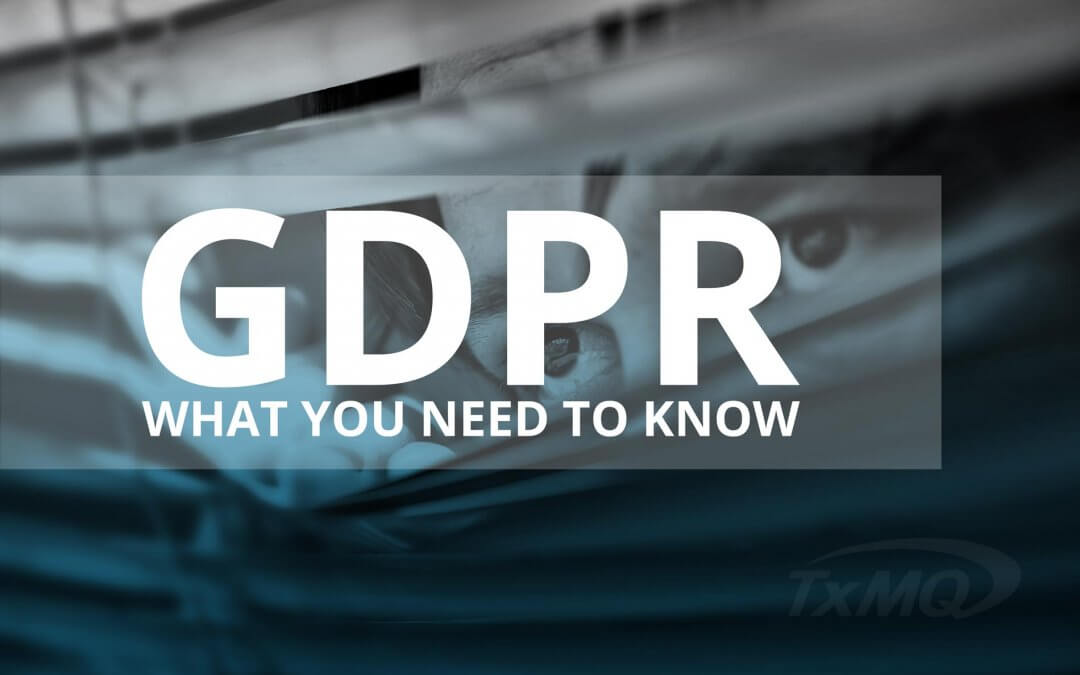What is GDPR?
GDPR is the European Union’s General Data Protection Regulation.
In short, it is known as the ‘right to be forgotten’ rule. The intent of GDPR is to protect the data privacy of European Union (or EU) citizens, yet it’s implications are potentially far reaching.
Why do EU citizens need GDPR?
In most of the civilized world, individuals have little true awareness of the amount of data that is stored about us. Some accurate, some quite the opposite.
Personal data is defined by both the directive and GDPR as information relating to a person who can be identified directly or indirectly in particular by reference to name, ID number, location data, or other factors related to physical, physiological, mental, economic, cultural, or related factors (including social identity).
If I find an error strewn rant about my small business somewhere online, my ability to correct it, or even have it removed is limited quite completely to posting a counter statement or begging whoever owns that content in question, to remove it. I have no real legal recourse short of a costly, and destined-to-fail law suit.
The EU sought to change this for their citizens, and thus GDPR was born.
In December of 2015, the long process of designing legislation to create a new legal framework to ensure the rights of EU citizens was completed. This was ratified a year later and becomes enforceable on May 25th of this year (2018).
There are two primary components to the GDPR legislation.
- The General Data Protection Regulation, or GDPR, is designed to enable individuals to have more control of their personal data.
It is hoped that these modernized and unified rules will allow companies to make the most of digital markets by reducing regulations, while regaining consumers trust.
- The data protection directive is a second component.
It ensures that law enforcement bodies can protect the rights of those involved in criminal proceedings. Including victims, witnesses, and other parties.
It is also hoped that the unified legislation will facilitate better cross border participation of law enforcement to proactively enforce the laws, while facilitating better capabilities of prosecutors to combat criminal and terrorist activities.
Key components of GDPR
The regulation is intended to establish a single set of cross European rules, designed to make it simpler to do business across the EU. Organizations across the EU are subject to regulation just by collecting data on EU citizens.
Personal Data
Personal data is defined by both the directive and GDPR as information relating to a person who can be identified directly or indirectly in particular by reference to name, ID number, location data, or other factors related to physical, physiological, mental, economic, cultural, or related factors (including social identity).
So, this means many things including IP addresses, cookies, and more will be regarded as personal data if they can be linked back to an individual.
The regulations separate the responsibilities and duties of data controllers vs data processors, obligating controllers to engage only those processors that provide “sufficient guarantees to implement appropriate technical and organizational measures” to meet the regulations requirements and protect data subjects’ rights.
Controllers and processors are required to “implement appropriate technical and organizational measures” taking into account “the state of the art and costs of implementation” and “the nature, scope, context and purposes of the processing as well as the risk of varying likelihood and severity for the rights and freedoms of individuals”.
Security actions “appropriate to the risk”
The regulations also provide specific suggestions for what kinds of security actions might be considered “appropriate to the risk”, including:
- The pseudonymization and/or encryption of personal data.
- The ability to ensure the ongoing confidentiality, integrity, availability, and resilience of systems and services processing persona data.
- The ability to restore the availability and access to data in a timely manner in the event of a physical or technical incident.
- A process for regularly testing, assessing and evaluating the effectiveness of technical and organizational measures for ensuring the security of the processing.
Controllers and processors that adhere to either an approved code of conduct or an approved certification may use these tools to demonstrate their compliance (such as certain industry-wide accepted tools).
The controller-processor relationships must be documented and managed with contracts that mandate privacy obligations.
Enforcement and Penalties
There are substantial penalties and fines for organizations that fail to conform with the regulations.
Regulators will now have the authority to issue penalties equal to the greater of 10 Million Euro, or 2% of the entity’s global gross revenue for violations of record keeping, security, breach notifications and privacy impact assessment obligations. However, violations of obligations related to legal justification for processing (including consent), data subject rights, and cross border data transfers, may result in double the above stipulated penalties.
It remains to be seen how the legal authorities tasked with this compliance will perform.
Data Protection Officers
Data Protection Officers must be appointed for all public authorities, and where the core activities of the controller or the processor involve “regular and systematic monitoring of data subjects on a large scale”, or where the entity conducts large scale processing of “special categories of personal data”; personal data such as that revealing racial or ethnic origin, political opinions, religious belief, etc. This likely encapsulates large firms such as banks, Google, Facebook, and the like.
It should be noted that there is also NO restriction on organization size, down to small start-up firms.
Privacy Management
Organizations will have to think harder about privacy. The regulations mandate a risk-based approach, where appropriate organization controls must be developed according to the degree of risk associated with the processing activities.
Where appropriate, privacy impact assessments must be made, with the focus on individual rights.
Privacy friendly techniques like pseudonymization will be encouraged to reap the benefits of big data innovation while protecting privacy.
There is also an increased focus on record keeping for controllers as well.
Consent
Consent is a newly defined term in the regulations.
It means “any freely given, specific informed and unambiguous indication of his or her wishes by which the data subject, either by a statement or by clear affirmative action, signifies agreement to personal data relating to them being processed”. The consent does need to be for specified, explicit, and legitimate purposes.
Consent should also be demonstrable. Withdrawal of consent must be clear, and as easy to execute as the initial act of providing consent.
Profiling
Profiling is now defined as any automated processing of personal data to determine certain criteria about a person.
“In particular to analyse or predict aspects concerning that natural person’s performance at work, economic situation, health, personal preferences, interests, behaviors, location and more”.
This will certainly impact marketers, as it appears that consent must be explicitly provided for said activities.
There is more, including details on breach notification.
It’s important to note that willful destruction of data is dealt with as severely as a breach.
Data Subject Access Requests
Individuals will have more information how their data is processed, and this information must be available in a clear and understandable way.
If said requests are deemed excessive, providers may be able to charge for said information.
Right to be Forgotten
This area, while much written about, will require some further clarification, as there are invariably downstream implications the regulations haven’t begun to address. Yet the intent of “right to be forgotten” is clear; individuals have certain rights, and they are protected.
Think you’re ready for GDPR?
Is your business really ready for GDPR? What measures have you taken to ensure you’re in compliance?
With the GDPR taking effect this coming May, companies around the world have a long, potentially costly, road ahead of them to demonstrate that they are worthy of the trust that so many individuals place in them.


